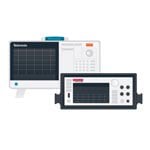Question :
How do I check for errors when I program my oscilloscope?
Answer :
When done retrieving the data, check for errors. This will let you know if the acquisition actually worked.
Typical error handling involves testing the status registers. To do this, have your program send the scope an “*esr?” query. If the program returns a non-zero value, this indicates that an event of some sort occurred. Now you decide how your program should handle the event. A simple to implement way is to simply display a message that says an error occurred. Perhaps, it can also refer the user to an appropriate GPIB Programmer manual for more information on how to decode the error code. A more involved, but more helpful, message would tell the user exactly what message occurred. To do this, you can mask the error code through register templates to decode the specific event that occurred. You could then display the name of this specific event in a message to the user.
This FAQ Applies to:
No product series
Product:
FAQ ID 52536
View all FAQs »


